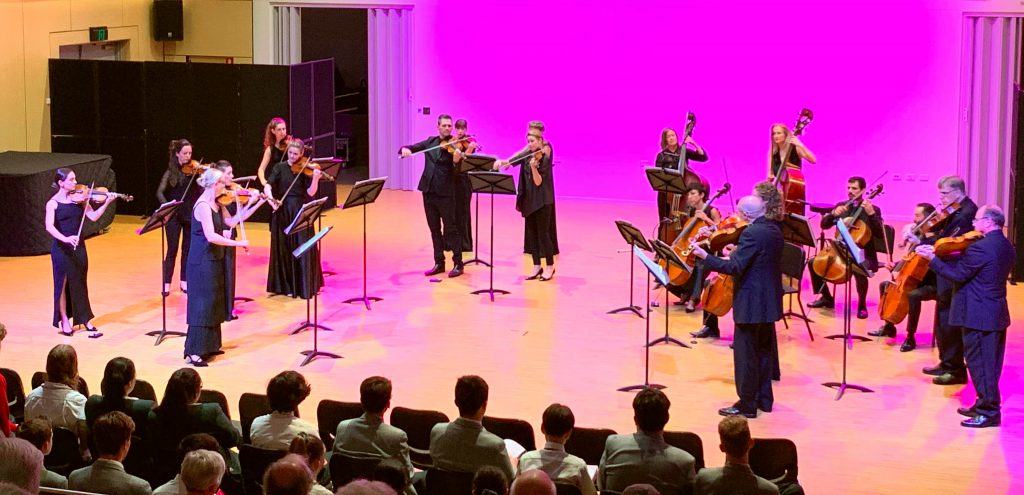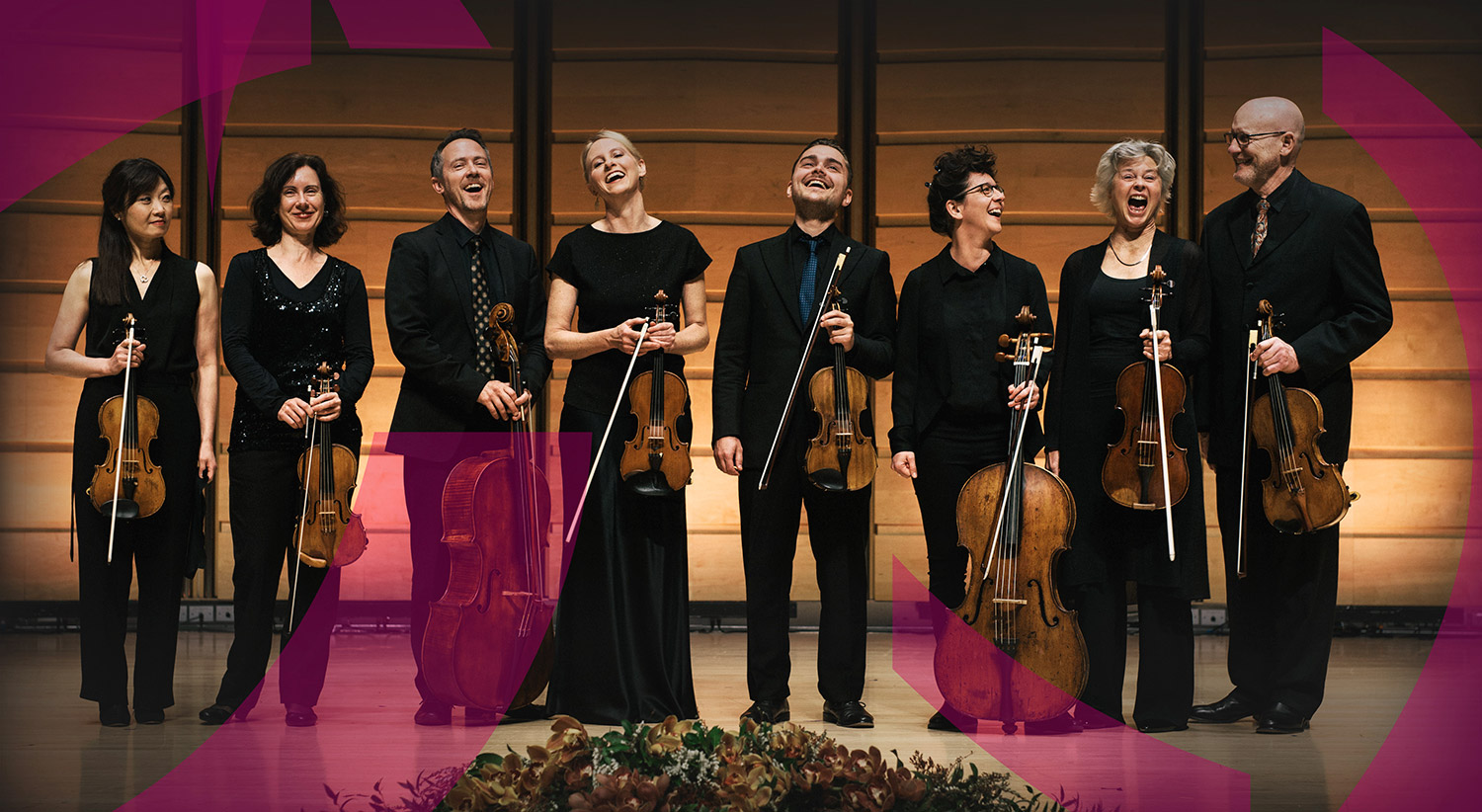An emotional but triumphant return to live performance by the Australian Romantic & Classical Orchestra.
The performance began with a rousing rendition of C.P.E. Bach’s March For the Ark, scored for brass and timpani. While it set off with some scratchy parts the tone picked up almost immediately. The highlight was a shift in metre which gave the march a quaint dance-like quality. It served as a miraculous fanfare for the night’s programmed works.
Max Bruch’s Serenade for Strings in A Minor is, as its longer title suggests, based on Swedish folk tunes. This perhaps explains why parallels can be seen, almost immediately, with Grieg, particularly his Holberg Suite and Norwegian Dances. Grieg-esque climaxes and brooding pizzicati shape the first movement and Bruch here seems to share Grieg’s fondness for the bass section of the strings as a means of introducing the central motif. Cellists Daniel Yeadon, Rowena Macneish, Anton Baba and Ruben Palma manoeuvred well the relentlessly wavering motif in the basses in the latter part of the second movement, an andante. The theme of the third movement, made at once sprightly and foreboding in the first few seconds, was given a wonderfully fiery treatment by the violins and it is at this point that the dance element shines through. In the fourth movement, Rachael Beesley‘s playing, with shimmering vibrato, shone as ever. It is surprising that Bruch composed this serenade in his final years, at a time when he was largely forgotten by a younger generation more interested in Strauss and Pfitzner, for the orchestra here gave a rousing testimony to Bruch’s unique and enduring powers of invention.

Britten’s Les Illuminations was in many respects the star of the show. It may be all very well to see Britten’s pieces as exemplars of some ‘musical Englishness’ pushed forth by the likes of Elgar and Vaughan Williams onto the musical scene in the early 20th century, but Les Illuminations is a clear exception. The surrealist text, written in French by Arthur Rimbaud some time in the 1870s – years before surrealism really took hold – is distinctly wild and forceful. It does not call upon the mildness and clarity of ‘English’ sopranos such as Emma Kirkby. In fact, it seems it was almost made for Jacqueline Porter’s remarkable voice, which never wavered in its strength throughout this meandering tour de force of the soprano range.
The violins began the Fanfare with an almost manic repetition of the motif (which reappears in some other movements) while violent tremolos in the bass gave the effect of swarming hornets. The strings were very good at realising the percussive quality of their respective instruments, and the strange eroticism of the lyrics in Antique were matched well by some sinuous, almost glissando-like, passages in the strings. Jacqueline Porter negotiated the tortuous twists and turns that begin Marine with incredible dexterity, only moments after Britten calls on the singer to belt out ‘les chars d’argent et de cuivre’ in stab-like staccato bursts. And the jarring, but catchy, chromatic descent in the middle of Villes is always a moment to behold.

Tchaikovsky’s Souvenir de Florence was a wonderful way to end. Despite its name, it is not Italian in the least, and might simply be an homage to his visit to Italy in his later years. If anything, the entire piece is distinctly Russian, and as if to dispel any thoughts to the contrary, Tchaikovsky begins the piece abruptly, almost in media res, with a rousing Russian waltz. The orchestra needed to make the changes in dynamics in the first movement a bit more stark, but there was never a wrong note to be heard; and the deep and resonant entries of the motif in the bass were never drowned out, despite the rousing forcefulness of the violins.
The final movement was by far the best. It centred around a distinctly Slavonic folk tune and is replete with sudden changes in dynamics that were realised faultlessly by the entire orchestra. Some strangely contrapuntal passages adorned the middle section, redolent of his earlier Manfred Symphony. The orchestra came together in a beautiful passage toward the end in which pizzicato passages were repeated from violins to bass and vice-versa three or so times. And the orchestra’s ability to execute fast and virtuosic passages shone through in the last movement’s final moments, for which Tchaikovsky’s often reserved his favourite show-stopping technique – rapid diminution. This made for a brilliantly tempestuous ending.
